Affiliate links on Android Authority may earn us a commission. Learn more.
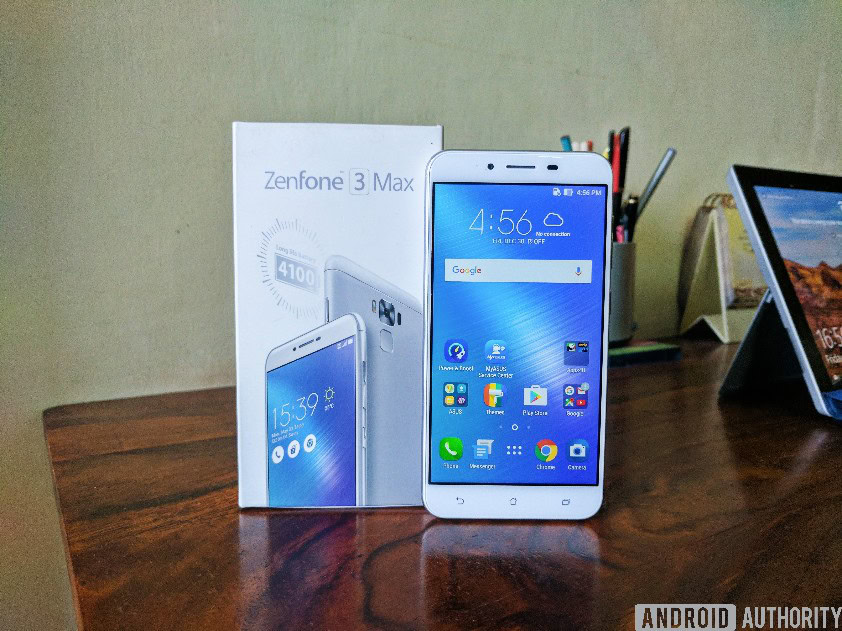
ASUS ZenFone 3 Max (ZC553KL) review
January 21, 2017
Asus ASUS ZenFone 3 Max
What we like
What we don't like
Our scores
Asus ASUS ZenFone 3 Max

ASUS has a crowded ZenFone line-up, but the company buckets its offerings in well-rounded categories. Like the ZenFone Max, with a focus on marathon battery life.
However, since last year with the launch of ZenFone 3 portfolio, the Taiwanese company has upped the ante in design and positioning and instead of focusing on hardware specifications, aims to bring premium experience to its users. That also means that most of their latest phones are not exactly run-of-the-mill value-for-money devices, but differentiate themselves in design, camera, battery life, etc.
ASUS launched the first ZenFone Max in 2015, and while it delivered on its USP of long battery life, it brought nothing else to the table. The follow-up version had more memory and faster processor, but both devices were chunky plastic smartphones that didn’t impress many.
However, the ZenFone 3 Max (ZC553KL) aims to change that with a well-rounded smartphone experience coupled with premium design, while continuing the focus on battery life. Is ASUS third time lucky with the Max? Let’s find out.
Design
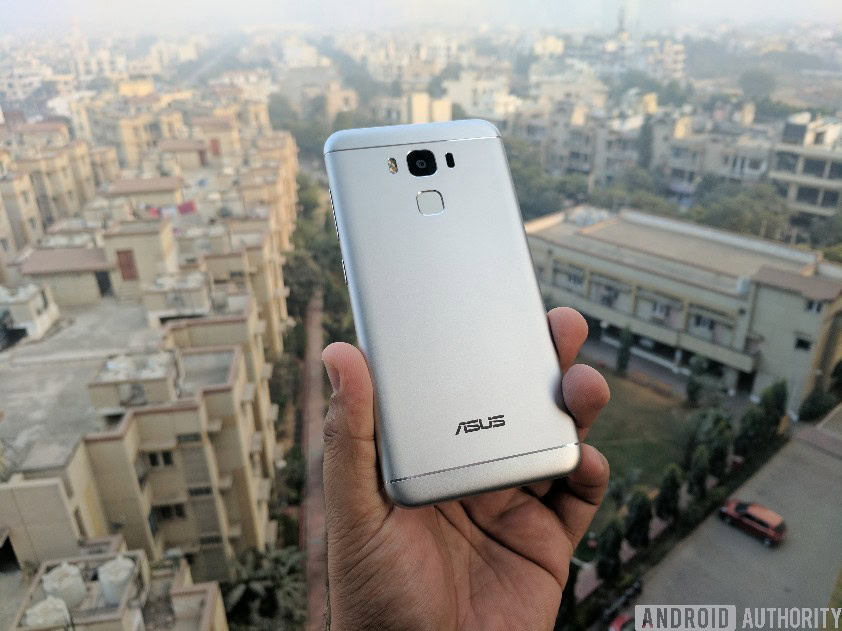
ASUS has finally brought an all-metal design to the ZenFone series, later than when most people would’ve liked. Even entry-level budget smartphones in 2016 boasted of an all-metal design. Better late than never, though. There’s nothing extraordinary about the design, but neither is it run-of-the-mill.
The homogenous design language of the ZenFone series is apparent, a premium one at that, bringing the flagship design to the budget smartphone. It is well-built and the aluminum chassis gives it a solid feel. It’s not very slippery, yet, since it is an all-metal phone, you’d have to get used to the smoothness and take care of the phone slipping out of the hand.
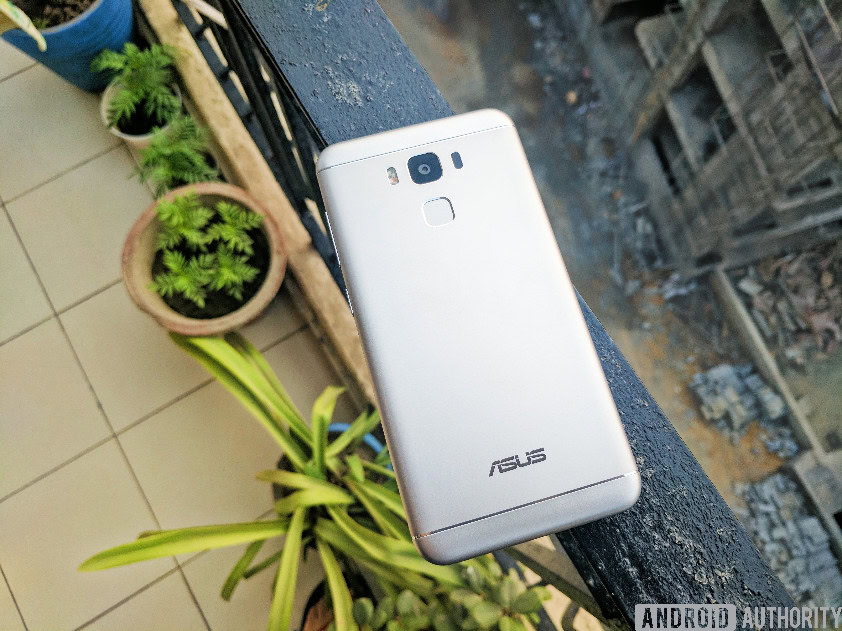
Unlike the original ZenFone Max, this one is not a brick and neither does it sport big bezels (it could’ve had even smaller bezels though, on top and bottom) and boasts of a pretty good 73 per cent screen-to-body ratio. It’s not very slim at 8.33mm, and at 175 grams, it’s not the lightest smartphone out there. Yet it is one of the lighter phones to pack a big battery and a large display, and you wouldn’t feel the heft lugging it around. Also, the gradual curves and rounded corners make it a very comfortable and ergonomic phone to hold, and it is easily pocketable unless you can’t stand larger smartphones.
Display
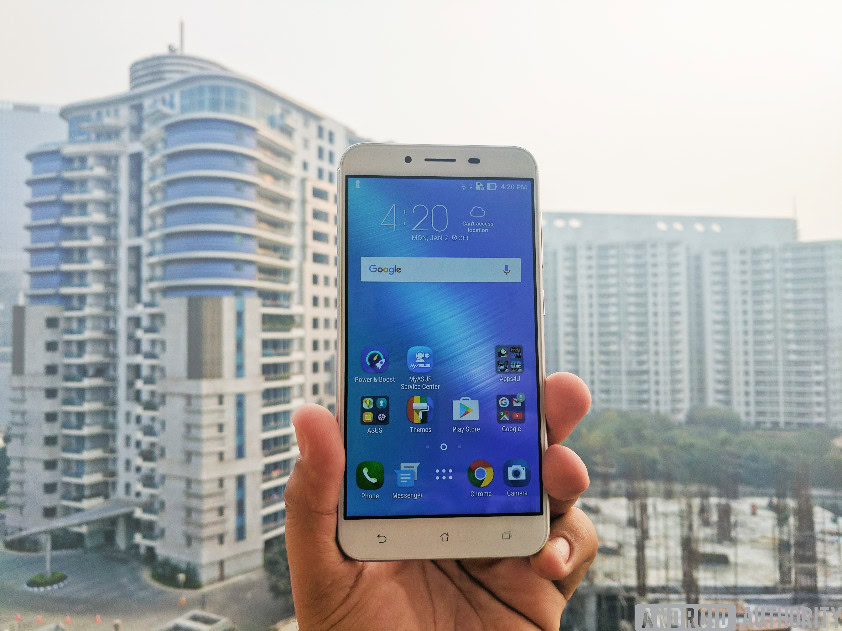
The ZenFone 3 Max sports a 5.5-inch Full HD IPS display with a pixel density of 401 ppi. The display is sharp and the 400 nits brightness is very good, offering great sunlight visibility.
The contrast ratio is not exceptional though, and if you’re a fan of vibrant, and even over-saturated AMOLED displays, like I am, this one is just average. Viewing angles on the phone are, however, quite good. There is a little color shift when viewing it from extreme angles, but that’s the case with most smartphones.
Performance
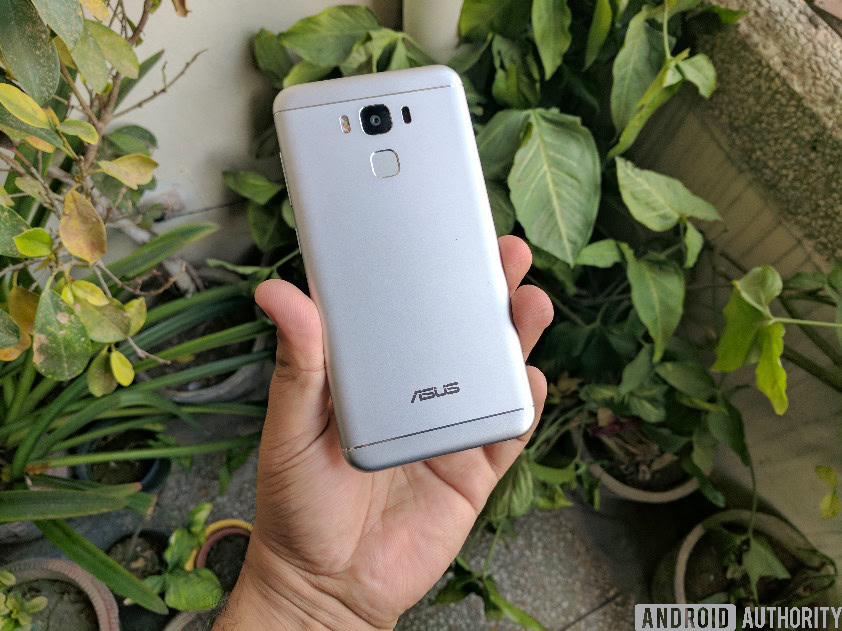
Powered by a 1.4Ghz Qualcomm Snapdragon 430 processor paired with 3GB of RAM, the ZenFone 3 Max chugs along nicely while multitasking offering a smooth Android experience.
However, if you stress the hardware, the phone tends to stutter a bit. You’d be unable to play graphic-intensive games at maxed-out settings and experience frequent frame-drops. Interestingly, it never gets too hot to handle even when the performance is stretched to its modest limits. However, you’d experience some lag in navigation and switching between apps in that case.
Clearly, the device is geared towards casual smartphone users – and that is where it excels. However, I think the company could squeeze some extra juice from its internals with better software optimization. Some other phones in the market tend to offer smoother experience with similar hardware specifications.
Of course, the pièce de résistance of the ZenFone 3 Max is its long battery life. There has been a drop in the battery capacity of the Max this time around (to go away from that chunky size), however, the 4100 mAh battery – with the hardware it packs and the software optimizations that ASUS has done – still manages to offer phenomenal battery life. With basic to moderate usage, I was easily able to get two days battery life on the phone, which is quite good. You can stretch that, and coupled with power saving features, can even squeeze more than that!
Hardware
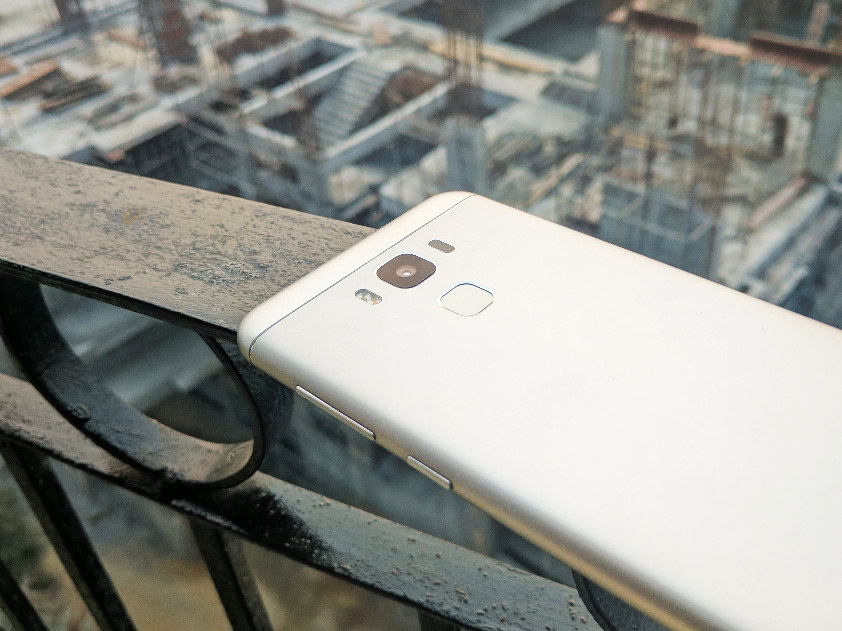
The ZenFone 3 Max comes with 32GB of internal memory, further expandable by up to 128GB via a microSD card slot. The dual SIM smartphones features a hybrid slot, so you can either use the second SIM or the microSD card, but not both.
The phone supports reverse charging, and can be used to charge other devices via OTG. There’s a bundled OTG adapter in the box. For a smartphone with a focus on battery life, it’s a shame that it doesn’t support fast charging. It ships with a regular charger, which takes painfully long to charge the big battery completely.
The fingerprint scanner can be used to answer incoming calls, launch the camera app, or take a picture, but is not quick enough. While the recognition is just fine, the authentication is a tad slow or requires slight pressure of the finger. Also, the capacitive keys on the front are not backlit. Of course, with impulse you get used to tapping the finger or thumb at the right place but sometimes it gets a tad annoying, especially in the dark or when you’re not holding the phone as you do usually.
Camera
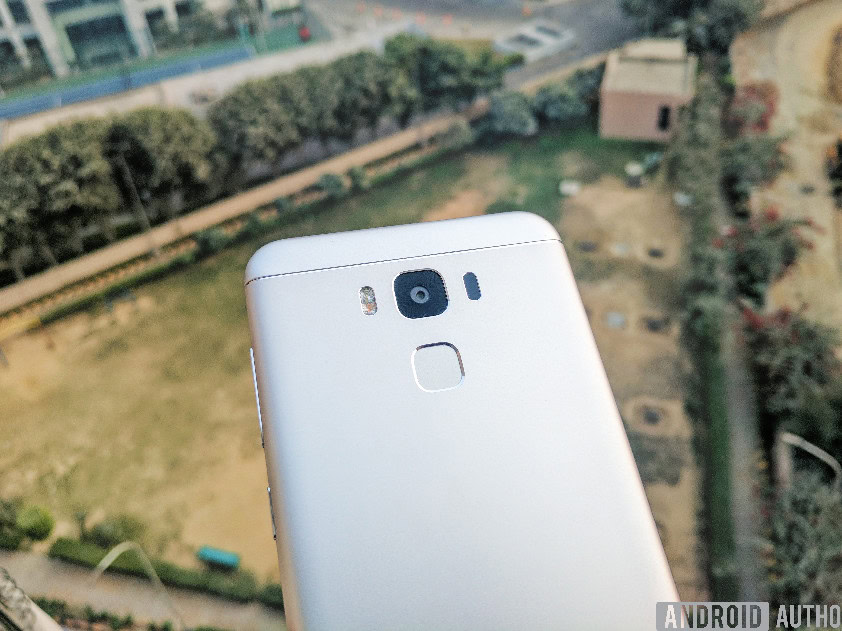
The ZenFone 3 Max sports a 16-megapixel rear camera with f/2.0 aperture, Phase Detection Autofocus and laser auto-focus, Electronic Image Stabilization for shooting videos, and dual-LED flash.
Outdoors in daylight, the camera performs very well and takes sharp pictures with good details. The color reproduction is mostly accurate. Although the pictures are generally noise-free, zooming them reveals pixilation which is more pronounced when I viewed them on a 40-inch display. For most people though, who just share photos on social media, this shouldn’t be a problem.
Indoors or in low-light conditions, the night mode is a mixed bag. Some of the shots give great results, better than auto mode, however, several times, they’d end up very noisy with messed up metering.
The camera focusses nicely and quickly, although there is a definite shutter lag and often I’d end up with a blurry photo when I was attempting to take a shot of a moving subject.
On the front, there is an 8-megapixel camera with f/2.2 aperture that manages to click detailed selfies even in tricky lighting.
The camera app on the Zenfone 3 Max is the same as on the company’s flagship ZenFone 3 smartphone. While the options are great to tinker around, including a manual mode, the camera on the ZenFone 3 Max is just above average.
Software
The ASUS ZenFone 3 runs Android 6.0.1 Marshmallow out of the box with the new version of the company’s proprietary ZenUI 3.0 on top of it. Virtually, every nook and corner of the Android experience gets a fresh coat of paint.
Right up, that’s a good thing. The older versions of ZenUI were plagued with bloatware and gimmicky UI elements that marred the overall user experience. The latest version is a complete makeover, and offers a clean UI with subtle animations. There are several nifty utilities, but there’s still a plethora of ASUS-branded apps that I’ve hardly seen anyone using really. Unfortunately, only a few of these can be uninstalled and while you can disable most others, they still occupy storage space on your phone.
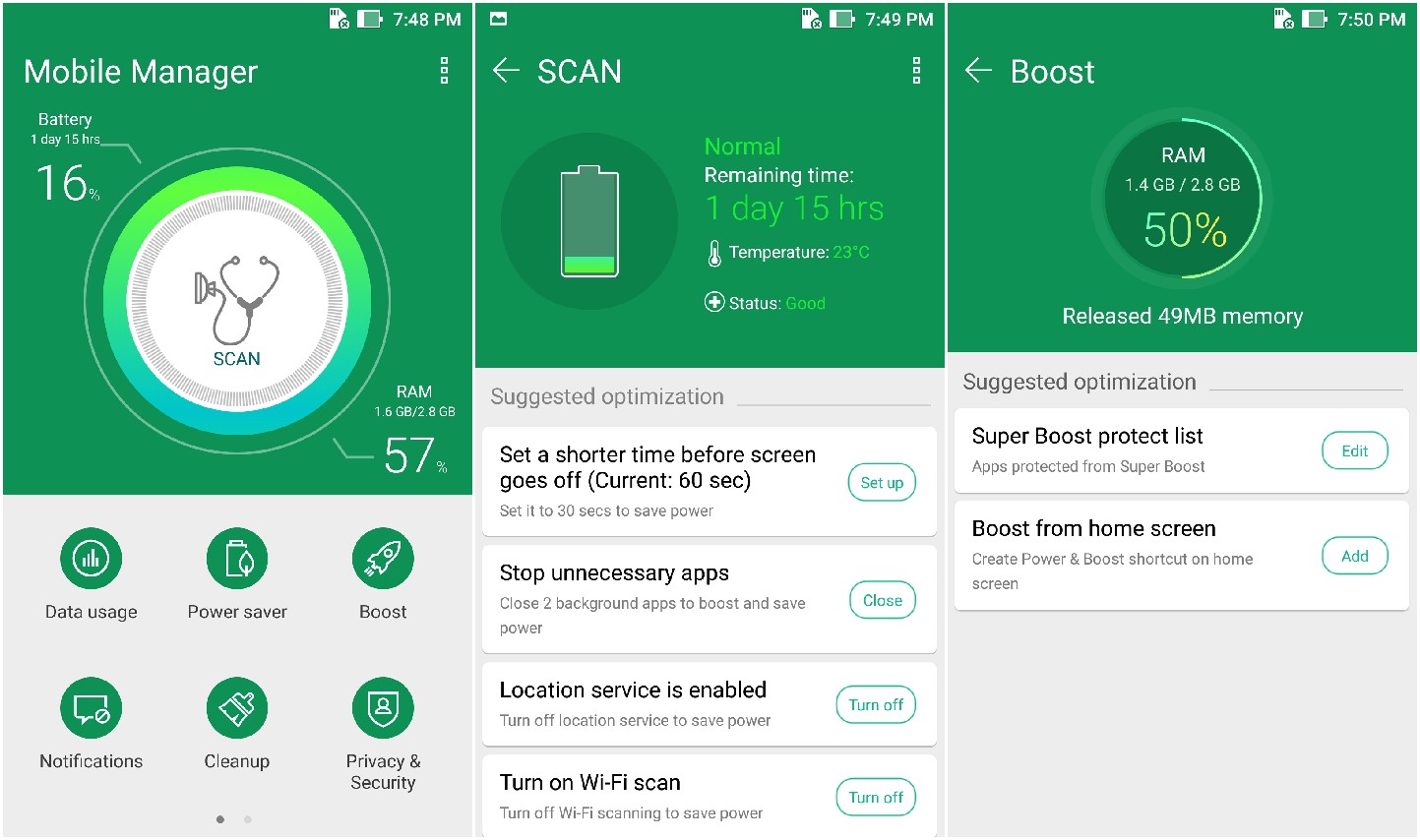
ZenUI 3.0 features an app drawer, and there’s a built-in search functionality. You can swipe down the screen and search the Web or your apps and contacts, and view your frequently used apps. There’s an all-new Theme Store from which users can download free as well as paid themes, wallpapers, icons, and ringtones to customize their smartphone.
One of the neat features of the ZenUI is ZenMotion which allows configuring a variety of touch and motion gestures like double tap to wake or flipping the phone when you get an incoming call to enable silent mode. It also allows you to enable the one-handed mode that shrinks the display to one corner of the screen for easy, one-handed usage when you’re on the move.

Of course, the most useful app from the entire ZenUI suite is the Mobile Manager. With slick animations and intuitive UI, the app offers quick ways to free RAM and storage space, and manage apps as well as app permissions. It’s a sort of one-stop destination for managing your phone’s performance.
The latest version of ZenUI on the ZenFone 3 is fluid and aims to offer stock Android-like experience while adding additional functionalities. And, it succeeds in doing that. It’s one of the better UIs out there in terms of ease of use and feels polished. Better internals would’ve made it even smoother on the ZenFone 3 Max. But the excess of bloatware is disappointing, and shows that the company has learnt nothing from similar criticism in the past.
Specifications
| Operating System | Android 6.0.1 Marshmallow with ZenUI 3.0 |
|---|---|
Display | 5.5-inch Full HD (1920 x 1080) IPS |
Processor | 1.4GHz octa-core Qualcomm Snapdragon 430 |
RAM | 3GB |
Internal Storage | 32GB; expandable up to 128GB with microSD card |
Rear Camera | 16MP | f/2.0 aperture | Dual-LED flash |
Front Camera | 8MP | f/2.2 aperture | 84-degree wide-angle lens |
Battery | 4100 mAh |
Dimensions | 151.4 x 76.24 x 8.3mm |
Weight | 175 grams |
Gallery
Pricing and final thoughts
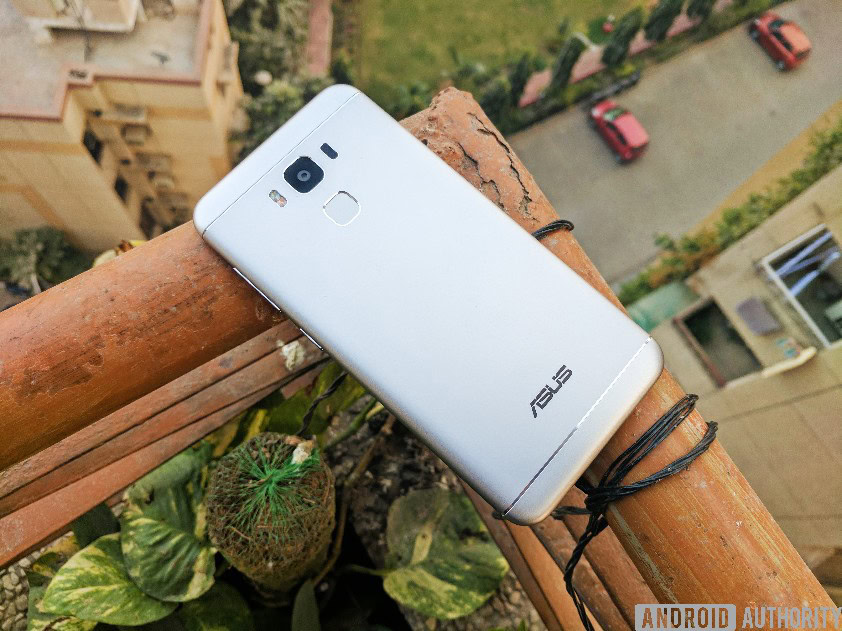
The ZenFone 3 Max aims to pimp up the Max range with a premium design. It succeeds there, but there’s little else.
Like the entire ZenFone lineup, the ASUS ZenFone 3 is a decent smartphone. However, even with the premium pitch, there’s no stand out factor running for it. It looks good on paper, but the real-world performance is limited – and would only meet the demands of less discerning users. Yes, there’s the fantastic battery life, and that’s the sole reason one should go for this device. Else, even looking within, there are better ZenFone siblings around.
ASUS isn’t officially selling the ZenFone 3 Max in the US, but in India, the device is priced at ₹17,999 ($265) – a tad higher than what everyone would’ve liked. At this price, it feels a little out of place. What do you think of the ZenFone 3 Max, and do you plan to buy one? Let us know your views in the comments below!